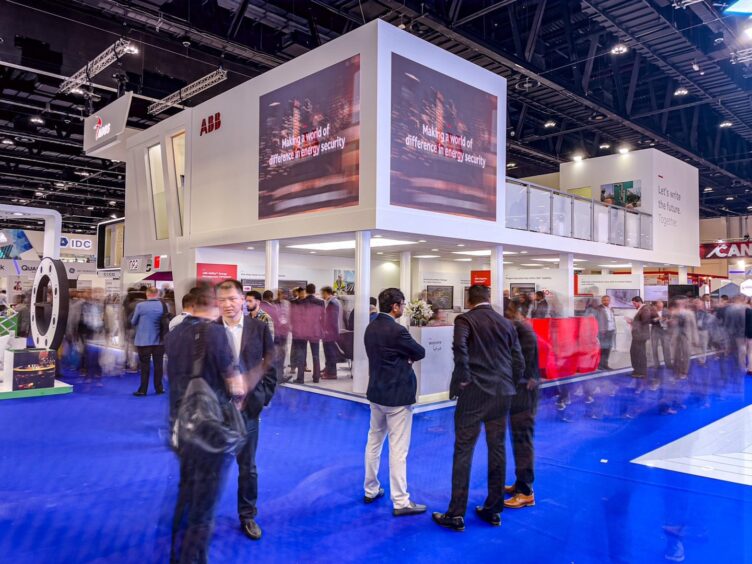
Hydrogen will play an increasingly important role in the energy transition, president of ABB Energy Industries Brandon Spencer has argued, despite challenges.
Capital will flow to the areas where companies can see the incentives and benefit from market access, Spencer told Energy Voice at Adipec.
While there is a lot of near-term interest in carbon capture and storage (CCS), this will come in addition to hydrogen, not instead of, the executive said.
The US government’s various steps – including the Inflation Reduction Act (IRA) and more – provide around $600-700 billion of subsidies, Spencer said. “ABB estimates [the US support] multiplies by five the amounts of capital that gets deployed. So now you’re talking up to $3 trillion of investment into clean energy.”
The US has the opportunity to stimulate the production of lower carbon hydrogen and also demand.
Other parts of the world lack all the pieces of the puzzle. The Middle East has gas and sunshine, in addition to infrastructure, but demand represents a challenge. Japan, on the other hand, is keen to shift power plants towards hydrogen, but lacks manufacturing scope.
The UK has an advantage in its wealth of carbon storage potential, Spencer said.
The US, though, has “tonnes of storage capacity, readily available gas at very low prices and then the IRA”.
Coloured carbon
Blue hydrogen will have the lion’s share of the opportunities in the next 10 years, with natural gas reforming working alongside CCS.
Those projects are moving ahead, Spencer said.
“We’re involved in several CCS projects in the North Sea, such as Northern Lights [in Norway]. These are going ahead in commercialised hubs. I’m a believer in blue hydrogen, I think we can get too wrapped up in colour rather than content. We should talk more about how the ultimate objective is to lower emissions.”
Blue hydrogen is around half the price of green, he noted, after normalising for incentives and penalties. “The models show then that green hydrogen takes over, at around a decade out.”
Companies are already working to find demand for hydrogen, in areas such as marine transport, material management and heavy transport.
Some of the big plans are also moving ahead on the basis that they can help create a market and capture some first mover advantage.
As blue and green hydrogen plants develop, all requiring infrastructure, is crucial.
“Those big companies, or people making big bets for these projects to go, I believe will be a catalyst for that end market,” Spencer said. “When others see that being successful, capital will then go to them. So I applaud the companies and countries and things that are taking big bold steps.”
Market move
Developing a market will be the catalyst to unlocking additional hydrogen investments, he predicted.
“We have maybe picked a favourite energy transition theme and pushed that. Such as, ‘nuclear’s terrible, but then wait a second, it’s not that bad’. And then you have ‘green hydrogen is everything or bust’ and then ‘it’s carbon capture or bust’.”
A market setting a price for hydrogen, with a price for carbon set in some way such as a tax or trade, would provide more global certainty. “The ultimate goal is less CO2 into the sky and the sky is global. But this is a very difficult task for politicians to figure out.”
Another area of interest for Spencer is electrification. Solving the technological challenge of using electricity to provide heating or cracking, for instance, would make a “huge difference” in emissions.
Recommended for you


 © Edward Reed/DCT Media
© Edward Reed/DCT Media